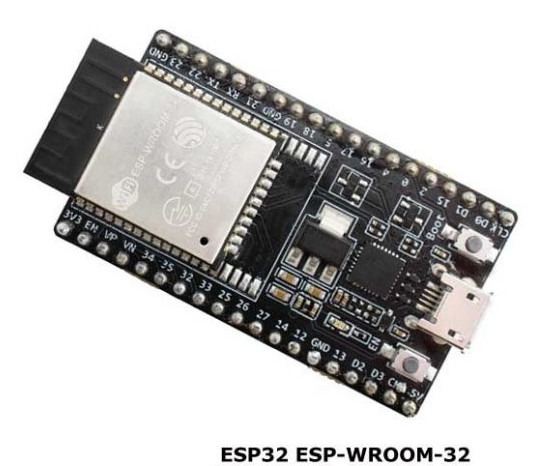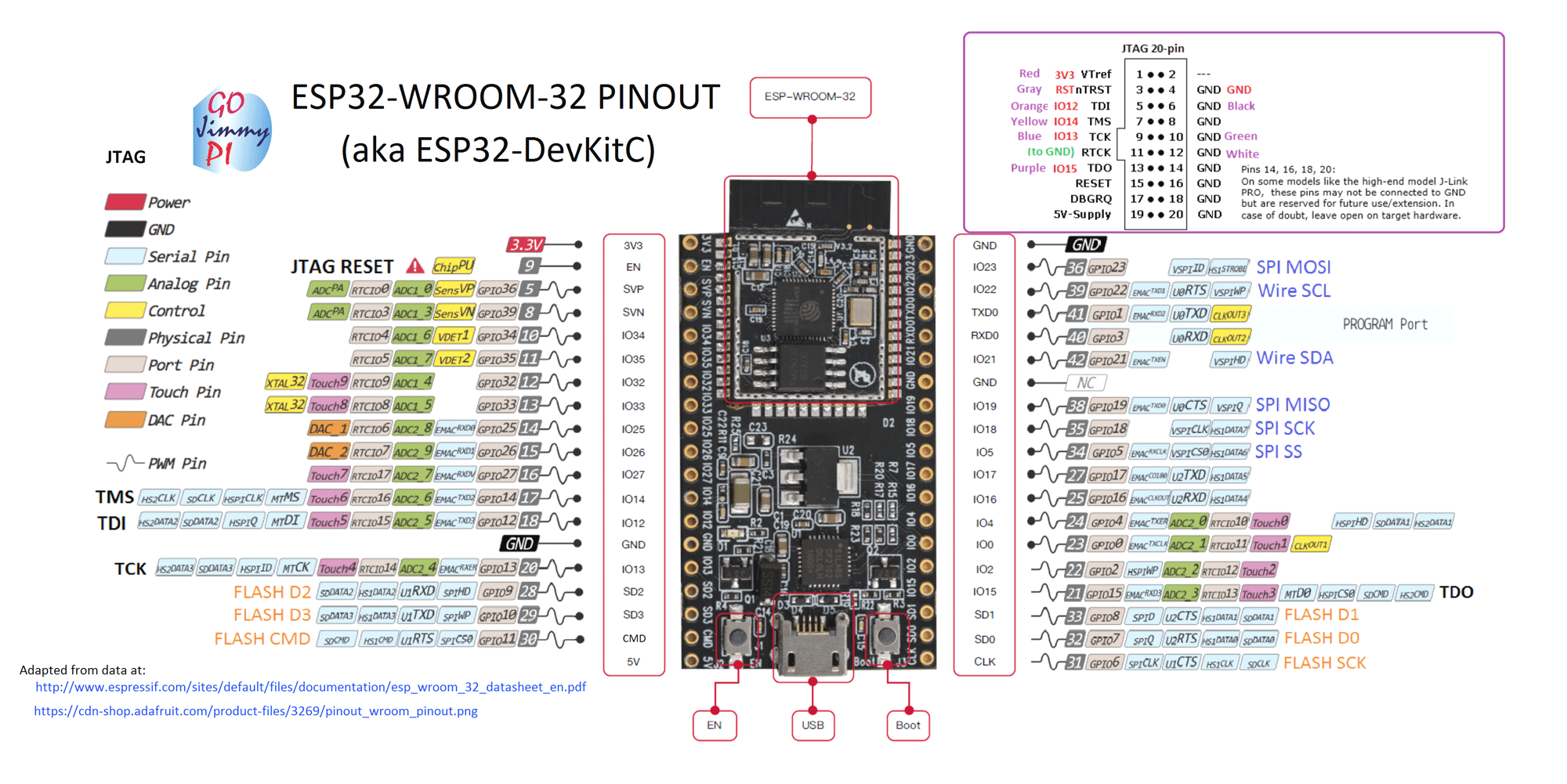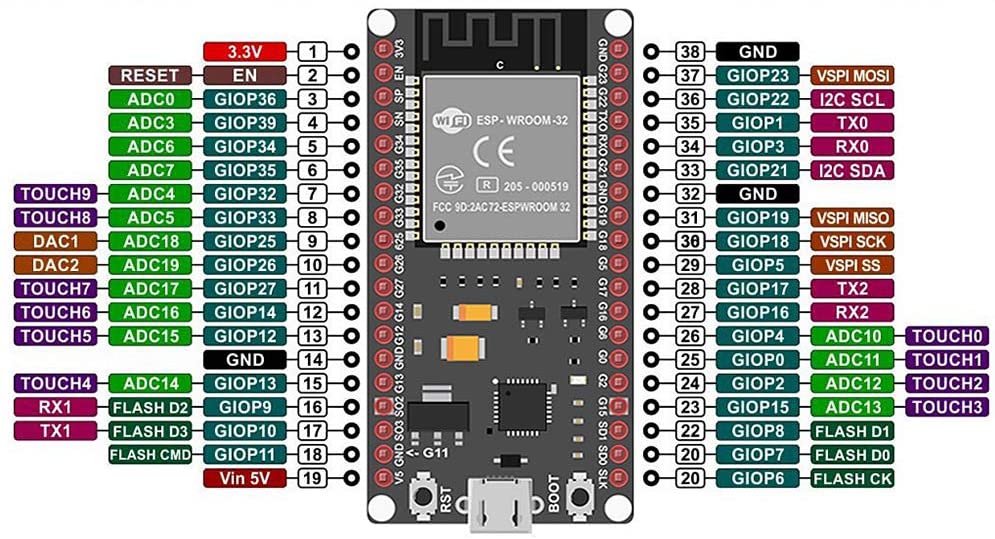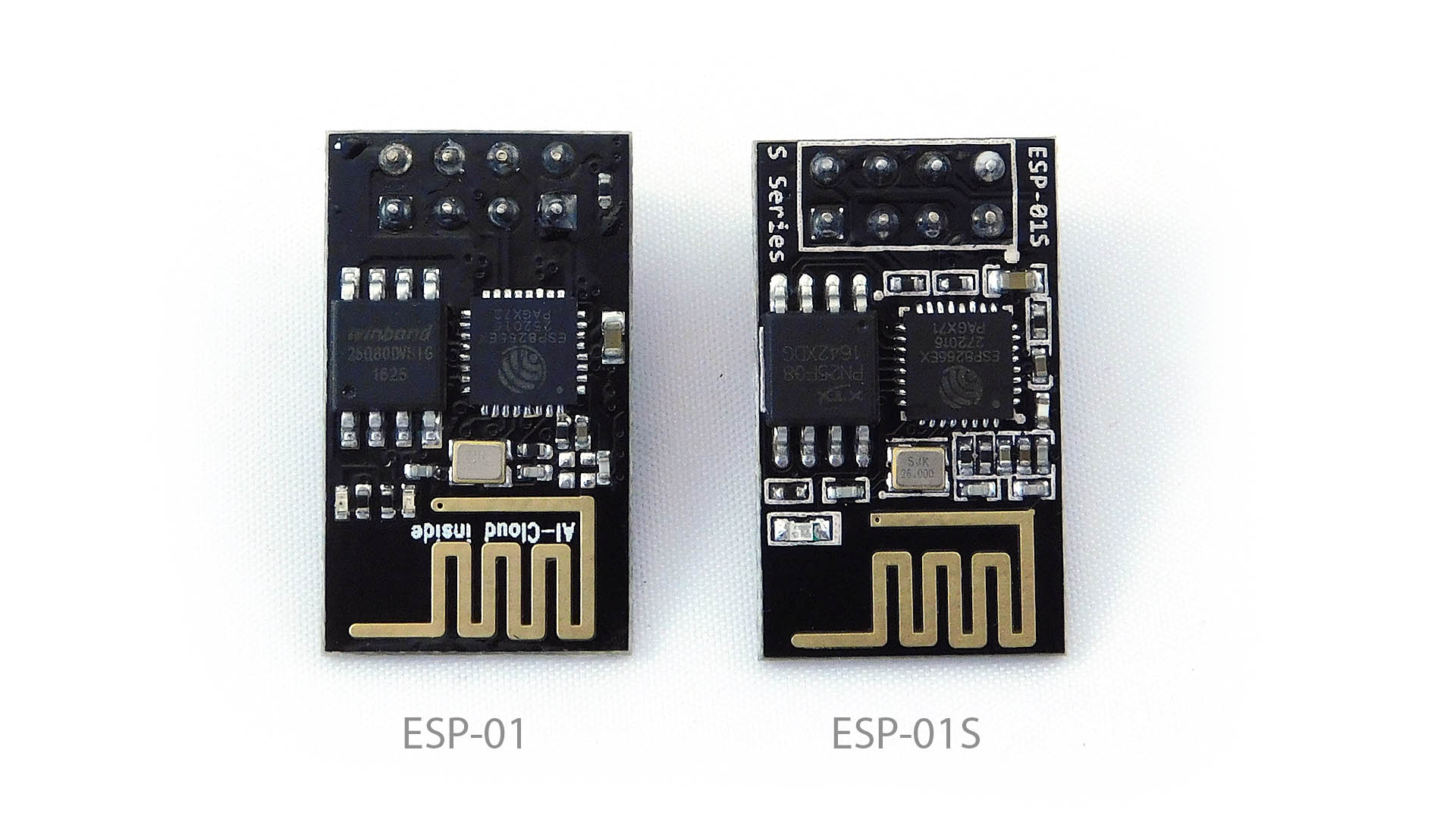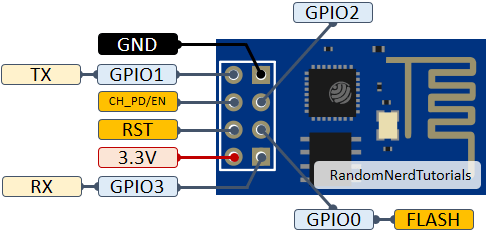Espressif
Documentatie Espressif microcontrollers
ESP32
De ESP32 is een budgetserie van laag-vermogen microcontrollers met geïntegreerde Wi-Fi en dual-mode Bluetooth. De ESP32-serie maakt gebruik van een Tensilica Xtensa LX6- microprocessor in zowel dual-core als single-core uitvoering. De ESP32 is gemaakt en ontwikkeld door Espressif Systems, een in Shanghai gevestigd Chinees bedrijf, en wordt vervaardigd door TSMC met behulp van hun 40nm-proces. Het is een opvolger van de ESP8266 microcontroller. Deze microcontroller is erg populair bij hobbyisten voor het ontwikkelen van Internet of things applicaties.
De ESP32 is verkrijgbaar in diverse uitvoeringen. Zelf heb ik een ESP32 Wroom 32D (38 pins) aangeschaft om mee te experimenteren.
Pin bezetting ESP32 Wroom 32 (38 pins)
ESP32-WROOM-32 (ESP-WROOM-32) Pin Configuration
| Pin Category | Pin Name | Details |
| Power | Micro-USB, 3.3V, 5V, GND | Micro-USB: ESP32 can be powered through USB port5V: Regulated 5V can be supplied to this pin which is we be again regulated to 3.3V by on board regulator, to power the board.3.3V: Regulated 3.3V can be supplied to this pin to power the board.GND: Ground pins. |
| Enable | En | The pin and the button resets the microcontroller. |
| Analog Pins | ADC1_0 to ADC1_5 and ADC2_0 to ADC2_9 | Used to measure analog voltage in the range of 0-3.3V.12-bit 18 Channel ADC |
| DAC pins | DAC1 and DAC2 | Used for Digital to analog Conversion |
| Input/output Pins | GPIO0 to GPIO39 | Totally 39 GPIO pins, can be used as input or output pins. 0V (low) and 3.3V (high). But pins 34 to 39 can be used as input only |
| Capacitive Touch pins | T0 to T9 | These 10 pins can be used a touch pins normally used for capacitive pads |
| RTC GPIO pins | RTCIO0 to RTCIO17 | These 18 GPIO pins can be used to wake up the ESP32 from deep sleep mode. |
| Serial | Rx, Tx | Used to receive and transmit TTL serial data. |
| External Interrupts | All GPIO | Any GPIO can be use to trigger an interrupt. |
| PWM | All GPIO | 16 independent channel is available for PWM any GPIO can be made to work as PWM though software |
| VSPI | GPIO23 (MOSI), GPIO19(MISO), GPIO18(CLK) and GPIO5 (CS) | Used for SPI-1 communication. |
| HSPI | GPIO13 (MOSI), GPIO12(MISO), GPIO14(CLK) and GPIO15 (CS) | Used for SPI-2 communication. |
| IIC | GPIO21(SDA), GPIO22(SCL) | Used for I2C communication. |
| AREF | AREF | To provide reference voltage for input voltage. |
ESP32-WROOM-32 (ESP-WROOM-32) Technical features
| Microprocessor | Tensilica Xtensa LX6 |
| Maximum Operating Frequency | 240MHz |
| Operating Voltage | 3.3V |
| Analog Input Pins | 12-bit, 18 Channel |
| DAC Pins | 8-bit, 2 Channel |
| Digital I/O Pins | 39 (of which 34 is normal GPIO pin) |
| DC Current on I/O Pins | 40 mA |
| DC Current on 3.3V Pin | 50 mA |
| SRAM | 520 KB |
| Communication | SPI(4), I2C(2), I2S(2), CAN, UART(3) |
| Wi-Fi | 802.11 b/g/n |
| Bluetooth | V4.2 – Supports BLE and Classic Bluetooth |
Shop
ESP8266 (ESP01, ESP01-S)
De ESP8266 is een goedkope microprocessor met Wi-Fi mogelijkheid en een volledige TCP/IP stack. De ESP8266 is ontwikkeld en wordt geproduceerd door de Chinese fabrikant Espressif Systems uit Shanghai.
ESP8266 Pin Configuration
| Pin Number | Pin Name | Alternate Name | Normally used for | Alternate purpose |
| 1 | Ground | – | Connected to the ground of the circuit | – |
| 2 | TX | GPIO – 1 | Connected to Rx pin of programmer/uC to upload program | Can act as a General purpose Input/output pin when not used as TX |
| 3 | GPIO-2 | – | General purpose Input/output pin | – |
| 4 | CH_EN | – | Chip Enable – Active high | – |
| 5 | GPIO – 0 | Flash | General purpose Input/output pin | Takes module into serial programming when held low during start up |
| 6 | Reset | – | Resets the module | – |
| 7 | RX | GPIO – 3 | General purpose Input/output pin | Can act as a General purpose Input/output pin when not used as RX |
| 8 | Vcc | – | Connect to +3.3V only |
